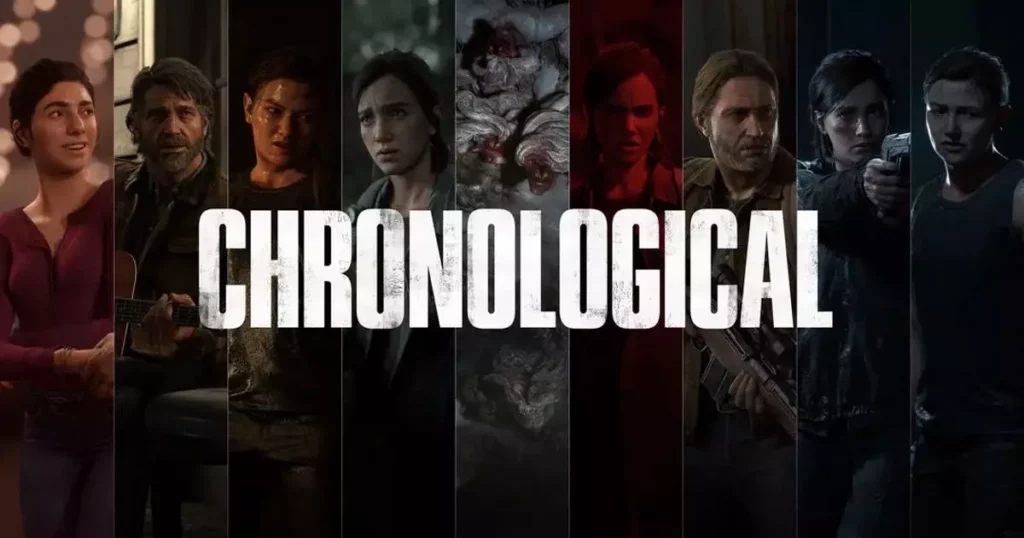In modern gaming, there’s a persistent temptation for developers to redefine storytelling by shaking up traditional paradigms. While innovation is necessary, it often comes with the risk of sacrificing clarity and emotional resonance. The recent introduction of a “Chronological Mode” in The Last of Us Part II epitomizes this gamble. Developers tout it as a revelatory way to experience the story, but such claims mask a deeper issue: it is a superficial attempt to appear progressive while undermining the narrative’s core strengths. This mode strips away the deliberate non-linear storytelling, which was carefully crafted to evoke suspense and deepen character understanding through fragmented revelations. By forcing the story into a chronological straightjacket, developers threaten to reduce a rich tapestry of emotional complexity into a dull sequence of events. The illusion of innovation here is dangerous because it dismisses storytelling as an art that depends heavily on pacing, surprise, and thematic layering—tools that are inherently compromised when the narrative is flattened.
The Loss of Artistic Depth and Emotional Complexity
The beauty of non-linear storytelling lies in its ability to mirror human psychology—our memories, misconceptions, and emotional trauma don’t unfold in neat chronological order. Naughty Dog’s decision to offer a linear perspective appears, on the surface, as a way to “see how interconnected everything truly is.” However, it comes across as a superficial maneuver designed to cater to viewers who prefer their stories served with less intellectual effort. It’s an oversimplification that undercuts the nuanced character development that the original structure fostered. Characters like Ellie and Abby are portrayed through the lens of their fragmented experiences, revealing their inner worlds gradually. Flattening this into a timeline robs the narrative of its layered revelations, turning complex moral dilemmas into predictable, straightforward turns. The emotional spine becomes fragile; suspense and ambiguity dissolve, reducing a story that thrived on moral gray areas into paint-by-numbers storytelling. Removing the narrative’s deliberate misdirection not only diminishes artistic richness but also disrespects the audience’s capacity for engagement with complex themes.
Repackaging Content as a Middle Ground Trap
In an industry increasingly driven by spectacle and quick engagement, this narrative overhaul feels less like a genuine artistic experiment and more like a marketing gimmick. Naughty Dog emphasizes that the mode is “fascinating,” yet explicitly advises against inexperienced players to use it. This indicates an underlying acknowledgment that the original storytelling was meticulously calibrated for an emotionally resonant experience. To then offer a simplified, linear replay feels more like a patch than a true innovation—an easy way to entertain casual audiences instead of challenging them. The addition of superficial cosmetic options, such as dressing Joel and Tommy as characters from Uncharted, compounds this sense of superficiality. These visual amusements distract from the story’s thematic weight, as if the core message is sacrificed to keep fans amused in the moment. This reflects a troubling trend: in the pursuit of novelty, developers often devalue narrative integrity, turning complex stories into commodities for fleeting entertainment.
The Erosion of Narrative Integrity and Artistic Vision
The risk inherent in this approach is not merely a matter of player preference but an existential threat to storytelling as an art form within video games. Games like The Last of Us were groundbreaking not solely for their mechanics but for their tightly woven narratives that invited players into emotionally charged worlds. Destroying this intricate architecture by imposing a chronological order diminishes the story’s depth, transforming a layered, morally ambiguous saga into a shallow recitation. Such a shift trivializes the intentional design that allowed revelations to unfold with purpose, enhancing thematic resonance. When the narrative becomes a checkmark on a timeline, it loses its capacity to surprise or provoke reflection. It sends a signal that developers prioritize surface-level engagement over meaningful artistic expression— a dangerous compromise that risks diluting the medium’s potential for storytelling.
The Implication of a Broader Industry Trend
This move by Naughty Dog isn’t isolated; it exemplifies a broader industry trend where creative risks are often replaced by easy gimmicks. Instead of cultivating unique, emotionally resonant experiences, many studios rely on rehashing familiar content with superficial twists. Such practices threaten to trivialize storytelling, fundamentally changing it from an art that invites introspection into a spectacle that demands only surface engagement. When subtlety and emotional nuance are sacrificed in favor of novelty, the artistic ecosystem of gaming suffers. This “experimentation” becomes a doublespeak for exploitation— exploiting the franchise’s established reputation to push meaningless features. True artistic evolution in gaming must be rooted in respecting narrative complexity, not undermining it for the sake of fleeting amusement or technical curiosity.
The Personal Opinion: A Warning Sign for Artistic Authenticity
From a center-right perspective that values tradition yet recognizes innovation, there must be a firm stance against these superficial narrative experiments. While evolution is essential, it should never come at the cost of artistic authenticity. Naughty Dog’s “Chronological Mode” appears less like a genuine attempt to deepen storytelling and more like a corporate ploy to attract clicks and casual viewers. This tendency threatens the integrity of storytelling within gaming—a medium uniquely positioned to combine narrative art and interactive experience. If developers continue to prioritize gimmicks over craftsmanship, the art of storytelling will become increasingly fragile, vulnerable to a landscape of disposable entertainment. Authentic storytelling isn’t about reordering events for novelty; it’s about respecting the complex psychology of characters and the deliberate pacing that evokes empathy and reflection. Sacrificing these principles for a quick thrill diminishes the potential for gaming to ascend beyond mere entertainment into a true art form, risking its credibility in the eyes of discerning audiences. The challenge, therefore, lies in resisting those temptations and embracing narrative depth as a cornerstone of authentic artistic growth.









Leave a Reply